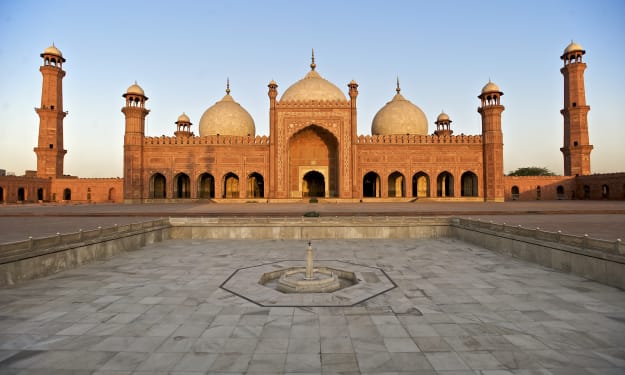The Grand Taj Mahal
One of the Seven Wonders of the World

The Taj Mahal: A Timeless Image of Adoration and Excellence
The Taj Mahal, quite possibly the most eminent compositional miracle on the planet, is a getting through image of adoration and magnificence. Situated in Agra, India, the Taj Mahal remains as a demonstration of the richness of the Mughal Domain and the affection for a head for his darling sovereign. Its spellbinding magnificence, rich history, and social importance have made it a notorious milestone and an UNESCO World Legacy Site.
Development and Building Splendor:
The Taj Mahal was authorized by the Mughal Sovereign Shah Jahan, who managed India from 1628 to 1658. Its development started in 1632 and took more than twenty years to finish, with the primary design completed in 1648 and the encompassing nurseries and embellishments added later. The head fabricated the Taj Mahal in memory of his number one spouse, Mumtaz Mahal, who unfortunately passed on during labor in 1631.
The structural brightness of the Taj Mahal mirrors the ideal congruity of Islamic, Persian, Indian, and Turkish impacts. It was planned by Ustad Ahmad Lahori, a cultivated draftsman of the Mughal court, alongside other talented craftsmans and specialists. The landmark features a dazzling mix of white marble and valuable stones, making a hypnotizing play of light and shadow.
The Imagery of Adoration:
The Taj Mahal is much of the time depicted as an image of everlasting adoration and dedication. Shah Jahan's affection for Mumtaz Mahal was significant, and her passing left him crushed. In her memory, he left on the aggressive venture of developing a radiant catacomb that would deify their adoration long into the future. The Taj Mahal, with its ethereal excellence and magnificence, is an impression of the head's significant sorrow and love for his left sovereign.
The Legend of Timeless Dedication:
As indicated by a famous legend, Shah Jahan had wanted to fabricate an indistinguishable dark marble catacomb for himself on the contrary bank of the Yamuna Waterway. He expected to interface the two designs with a silver extension. Nonetheless, before he could understand his vision, he was ousted and detained by his child, Aurangzeb, in the close by Agra Post. Shah Jahan spent the remainder of his life in bondage, looking at the Taj Mahal from his window, grieving the deficiency of his darling Mumtaz.
Structural Elements:
The Taj Mahal's focal construction is the fundamental burial chamber, which houses the cenotaphs of Mumtaz Mahal and Shah Jahan. These cenotaphs are perfectly enhanced with complex trims of valuable stones and Quranic engravings. The genuine burial places lie in a chamber beneath and stay shut to general society, with regards to Islamic funerary customs.
The famous onion-molded vault that crowns the principal structure is an unmistakable element of the Taj Mahal's engineering. Four minarets, each remaining at the edges of the principal building, add to its even excellence. The minarets are somewhat shifted outward to safeguard the primary burial place in the event of a quake.
Nurseries and Reflection Pools:
The Taj Mahal is set inside a huge and very much arranged garden known as the Charbagh. This Persian-style garden is partitioned into four quadrants by pathways and water channels, addressing the possibility of heaven. The tranquil reflection pools, which flank the fundamental construction, make a mirror-like impression of the Taj Mahal, improving its ethereal excellence.
Social and Public Importance:
The Taj Mahal holds gigantic social and public importance in India. It is viewed as an image of India's rich history and compositional legacy. In 1983, UNESCO assigned it as a World Legacy Site, perceiving its extraordinary general worth and the requirement for its safeguarding.
Vacation spot:
The Taj Mahal draws in a huge number of travelers from around the world consistently. Guests wonder about its engineering magnificence, the romantic tale behind its creation, and the sheer excellence that is beyond anything describable. It is especially charming during dawn and dusk while the changing shades of the sky ponder the immaculate white marble, making a mysterious vibe.
Preservation Endeavors:
Throughout the long term, the Taj Mahal has confronted different difficulties because of contamination, natural debasement, and a rising number of guests. To guarantee its safeguarding for people in the future, the Indian government, as a team with global associations, has executed preservation endeavors to secure and reestablish the landmark.
Conclusion:
The Taj Mahal stands tall as an everlasting image of adoration and magnificence, a demonstration of the glory of the Mughal Domain, and a fortune of India's compositional legacy. Its entrancing charm and authentic importance keep on enrapturing the hearts of individuals from all edges of the world. As a guide of adoration and commitment, the Taj Mahal stays an immortal magnum opus that will everlastingly move wonder and esteem in ages to come.
About the Creator
Syed Omar Hussain
Syed Omar Hussain, a multifaceted talent—a writer, poet, musician, farmer, and a textile engineer.
https://www.youtube.com/channel/UCKTpuZgA1Edh4tX-TLMDirQ






Comments
There are no comments for this story
Be the first to respond and start the conversation.